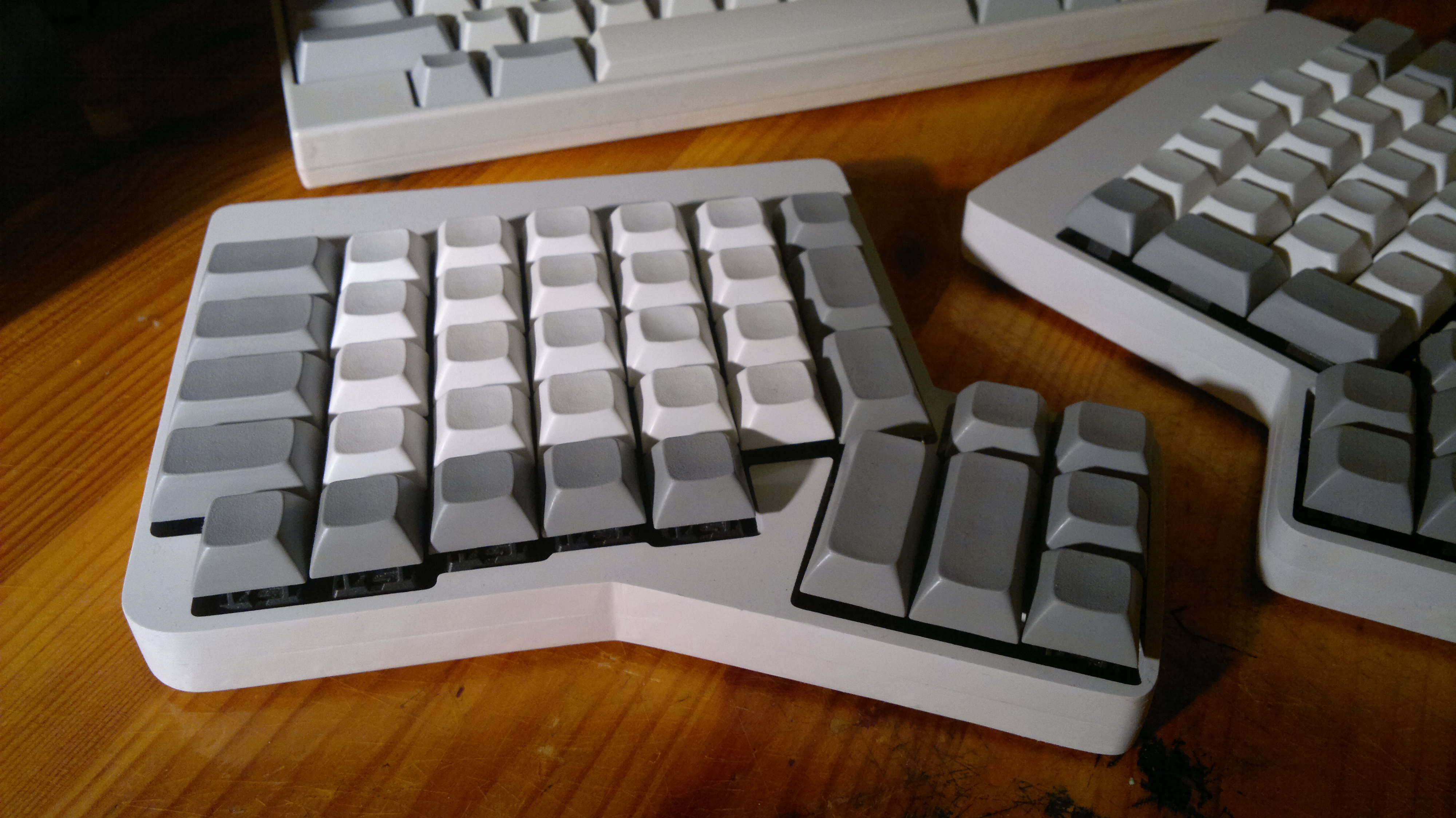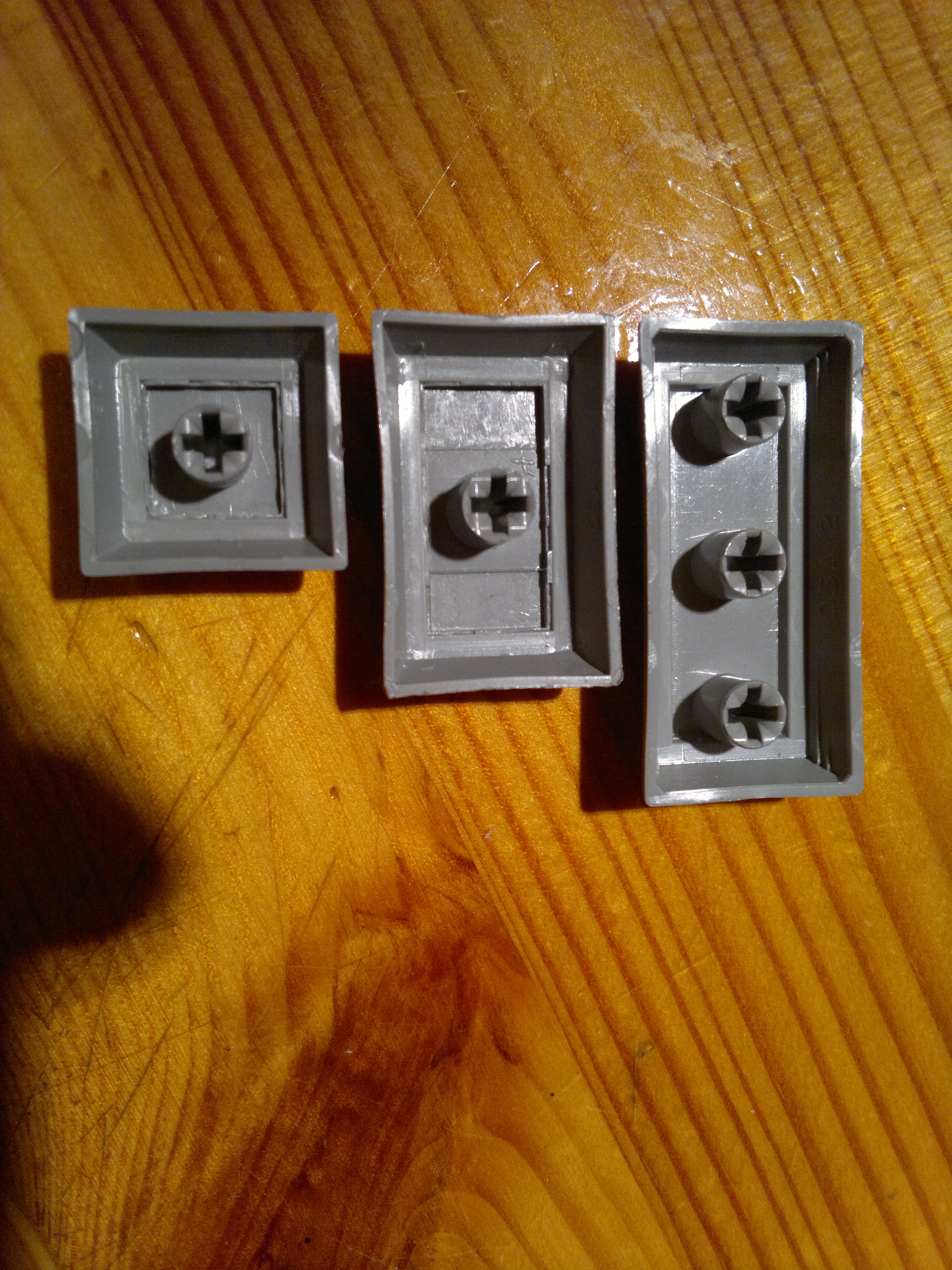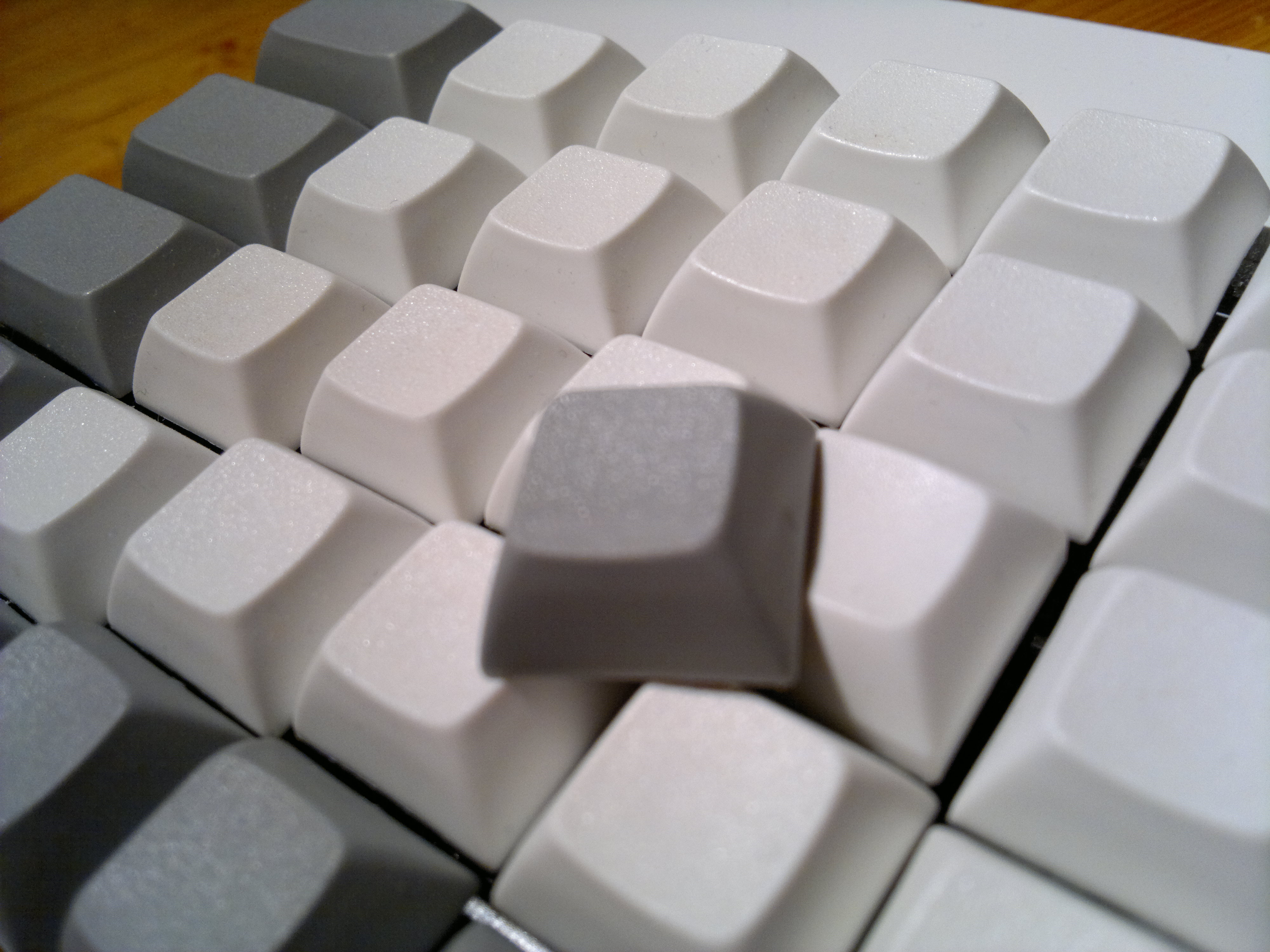The ErgoDox Experience
26 Mar 2015 The ErgoDox is one of my favourite keyboards. It was also the first that I built myself. It is both advantageous because of its layout but also because of its easily customisable nature.
The ErgoDox is one of my favourite keyboards. It was also the first that I built myself. It is both advantageous because of its layout but also because of its easily customisable nature.
The Parts
I purchased all the parts through falbatech . I found Falbatech to be a great company that was helpful when I contacted them for help over the forums. Another good thing about the ErgoDox is the amount of support available. If you have a problem, it is very easy to contact others who have built them themselves. FalbaTech are really the only place you can buy the parts pre-built and even at a reasonable price. I was eager to get into mechanical keyboards but really wanted to get something impressive. For myself I really enjoyed the idea of an ErgoDox. At the time this was the cheapest way to get hold of an ErgoDox that wasn’t the massdrop (which started after I bought it). This has however just recently changed due to a new indiegogo that is producing ErgoDoxs. I chose to get the signature plastics DSA keycaps because I really wanted a complete set. I knew it was possible to create a set from various keysets but I just wanted a complete set that fitted.
The Switches
As this was my fist mechanical keyboard I chose to make it with Cherry Clear switches. I thought of these as a good starting point as I was coming from using a IBM Model M. I chose them on the basis that they are both fairly stiff and tactile. In hindsight I feel that it was a good decision. They quite perfectly capture the very elements that make mechanical switches great. You can feel them and you can hear them. Even though they aren’t clicky, they certainly have a clack to them. This is an oversimplification of mechanical switches, but it will do.
The Keycaps
The keycaps I choose were signature plastics DSA. I chose the grey and white colour scheme because I was coming from an IBM Model M and really liked the pearl and pebble colours. This was the closest I could get. Thinking back I would have liked to do a bolder colour combination, maybe something more exciting. I think my colour choice is a little generic, but I am by no means unhappy with it. It is hard to get the aesthetics of a keyboard right and this was my first try.
This was also my first set of DSA. I was quite worried about this as It seemed very strange to have flat keys. After typing on them for a couple of days I could not really find and drawbacks to the flat profile. But this may also be due to other factors. This was the first keyboard I had chosen to build and with it I was going to learn to touch type properly. When using blank keycaps, it is necessary. So you could say that this was the first keyboard I properly typed on and therefore the first keycaps I typed upon were DSA profile. My typing skill was brought up on DSA so I can vouch for their feel. Going into this I knew there were a couple of factors that would affect the feel of the keycaps:
- Material (often dictates the texture)
- Texture
- Thickness
- Profile
Coming from the two piece construction of the Model M keycaps It is not really easy to compare them in that way. As you can see the keycaps have some thickness to them but they are not the thickest. But I can say that they work well on Clear switches quite well. They give it enough weight and feeling to really complete the sound of the clack!

The texture of the keycaps is exactly what I am looking for in a keycap. But trying to convey the feeling of a keycap is obviously quite a task. The keycaps feel like you are gripping them the right amount. It is a much nicer experience than typing on a shiny keycap. In some situations when typing on an old keyboard with shiny keycaps the feeling can be almost sticky. This is not the case with these. I believe this is what the Model M keycaps would have felt like new but since I haven’t used a new one this is only speculation. I can say that I have spent some time getting to know these keycaps as I when I began using the ErgoDox I typed in qwerty. On a good day I get around 60wpm. But I learnt colemak on an ErgoDox and reach speeds of 75 wpm.

Conclusion
At the beginning of my mechanical keyboard journey, I saw pictures of the ErgoDox and thought I would never type on one of them. At that time it seemed like the most foreign object and faraway goal. Nothing that I would have ever considered. It was the epitome of the mechanical keyboard. But at this time I was not looking for this. Nevertheless, the idea of the ErgoDox was stuck in my mind. This was what really started my interest into mechanical keyboards. Because it was a keyboard that required manual assembly it really gave me an in depth look at how I could create and build my own in the future. Building the ErgoDox was an educational experience which made the hobby more than owning keyboards. The fact that I had to assemble it myself was probably one of the main things that drew me to the keyboard and I’m really glad that it did.
It also taught me how to type in a better way. By this I mean a traditional touch typing method. It really pushed me in two ways. The blank keycaps obviously had an impact on how I could type but the new layout also pushed me into learning where all the keys are. I was a little apprehensive about the profile at the beginning but quickly grew accustomed to them. The only thing I would change is the colour.
Overall I have really enjoyed the whole experience of making and using an ErgoDox. It cemented my hobby whilst also teaching me how to type in a better way. It also introduced me into the more technical side like building firmware and choosing and learning the alternate layouts.
I really recommend anyone who is even just thinking about getting themselves an ErgoDox to do so.